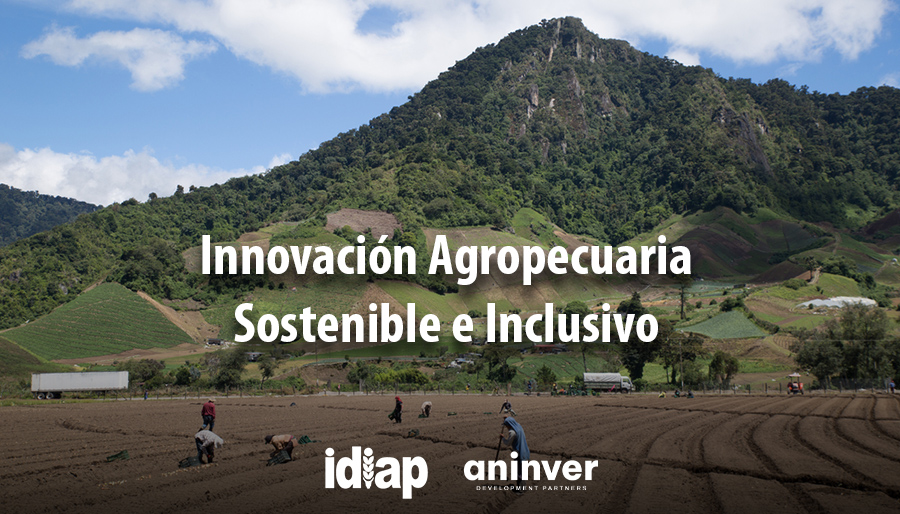Wetin be GMO and foods for Nigeria wey dey di list – BBC

Report on the Status and Implications of Genetically Modified Organisms (GMOs) in Nigeria
A recent resurgence in public discourse surrounding Genetically Modified Organisms (GMOs) has prompted an examination of their role in Nigeria’s national development strategy. This report analyzes the current state of GMO adoption, regulatory frameworks, and public concerns, with a significant focus on their alignment with the United Nations’ Sustainable Development Goals (SDGs).
Official Position on GMOs and Food Security (SDG 2: Zero Hunger)
The National Biosafety Management Agency (NBMA), the primary regulatory body, has articulated a clear position on the necessity of biotechnology for national food security. Dr. Agnes Asagbra, the Director-General of the NBMA, stated, “Nigeria need GMO for food security. We no fit meet our food requirements by di rural farming wey we dey do.” This stance directly addresses SDG 2 (Zero Hunger) by promoting advanced agricultural techniques to enhance food production, ensure stable food supplies, and improve the productivity of small-scale farmers.
Understanding Genetic Modification Technology
Definition and Techniques
Genetically Modified Organisms are defined as plants, animals, or microorganisms whose genetic material (DNA) has been altered using modern biotechnology techniques that do not occur naturally. This process is distinct from traditional crossbreeding methods.
- NBMA Definition: “Any organism wey be living or non-living wey get key combinations of genetic material wey dem collect by using modern biotechnology.”
- Expert Explanation: Environmental engineer Yekinni Oluwafemi clarifies that the key difference is precision. “Instead of say you breed crops for years to improve drought tolerance, genetic engineering fit directly put drought resistant gene for plant.”
Dr. Bernard Ehirim, a geneticist with the African Agricultural Technology Foundation (AATF), identified several modern biotechnologies employed:
- Recombinant DNA technology
- CRISPR gene editing
- Agrobacterium-mediated transformation
- Gene gun (biolistics)
Historical Timeline and Approved GMOs in Nigeria
Legislative and Commercial Milestones
- 2001: Initial discussions on GMOs begin in Nigeria.
- 2015: The National Biosafety Management Act is signed into law, creating a legal framework for GMO regulation.
- 2019: The first GMO food crop, BT Cowpea (beans), is approved for commercial release.
- 2024: TELA Maize is approved for cultivation and commercial release.
Approved GMO Products and their Contribution to SDGs
The NBMA has officially approved three primary GMO crops for cultivation and commercialization, each contributing to specific development goals:
- BT Cotton: Engineered for pest resistance, this crop aims to increase yields and profitability for farmers, contributing to SDG 8 (Decent Work and Economic Growth).
- BT Cowpea (Beans): Modified to resist the Maruca vitrata insect pest, this crop reduces the need for chemical pesticides and secures a vital protein source, supporting SDG 2 (Zero Hunger) and SDG 12 (Responsible Consumption and Production).
- TELA Maize: This variety is engineered for both drought tolerance and pest resistance, making it a critical tool for climate change adaptation under SDG 13 (Climate Action) and enhancing food security under SDG 2.
In a significant public health initiative aligned with SDG 3 (Good Health and Well-being), Nigeria approved the release of genetically modified mosquitoes in May 2024. These non-biting male mosquitoes carry a self-limiting gene designed to reduce the population of malaria-transmitting female mosquitoes.
Analysis of Concerns and Risks within the SDG Framework
Economic and Social Concerns (SDG 1 & SDG 8)
Farmer and SDG advocate David Ezeonyekwere raised concerns regarding the funding of GMO development and the potential for farmer dependency on seed corporations. He highlighted past issues with non-viable hybrid seeds, which could threaten the economic stability of smallholder farmers, a key target group under SDG 1 (No Poverty) and SDG 8 (Decent Work and Economic Growth). The issue of seed replantability is a major concern, though experts clarify that the “terminator gene” technology is not used in currently approved GMOs worldwide.
Environmental Impact (SDG 15: Life on Land)
Potential environmental risks are a central part of the debate. These risks are directly related to the targets of SDG 15 (Life on Land), which seeks to protect biodiversity and ecosystems.
- Cross-pollination: The risk of GMO crops cross-pollinating with wild relatives.
- Biodiversity Loss: Concerns that widespread cultivation of a few GM varieties could reduce genetic diversity.
- Development of “Superweeds”: The potential for weeds to develop resistance to herbicides used with GM crops.
Dr. Ehirim acknowledges these risks but states that robust regulation and management strategies, as mandated by the NBMA, are in place to mitigate them.
Health and Safety Regulations (SDG 3 & SDG 12)
Public apprehension about the health impacts of GMO foods persists. However, scientific and regulatory bodies maintain that approved GMOs are safe for consumption.
- Expert Consensus: Mr. Oluwafemi noted, “No credible scientific evidence dey link approved GMO foods to diseases or deaths for human beings.” This is supported by global bodies like the World Health Organization (WHO) and the Food and Agriculture Organization (FAO).
- Regulatory Assurance: Dr. Asagbra confirmed that all approved GMOs in Nigeria undergo rigorous scientific analysis based on international standards, including the Cartagena Protocol on Biosafety and the Codex Alimentarius, ensuring they are safe for consumption and the environment, in line with SDG 3 and SDG 12.
- Labelling: The NBMA is collaborating with the National Agency for Food and Drug Administration and Control (NAFDAC) to enforce appropriate labelling of GMO products, promoting informed consumer choice.
Governing Legislation
The use and importation of GMOs in Nigeria are governed by a framework of national laws designed to ensure safety and control, including:
- The National Biosafety Management Agency Act, 2015
- The Plants Quarantine Act, 2017
- The Customs and Excise Management Act, 2004
Analysis of Sustainable Development Goals in the Article
1. Which SDGs are addressed or connected to the issues highlighted in the article?
- SDG 2: Zero Hunger: The article’s central theme is the use of Genetically Modified Organisms (GMOs) to achieve food security in Nigeria. The Director General of the National Biosafety Management Agency (NBMA) is quoted saying, “Nigeria need GMO for food security. We no fit meet our food requirements by di rural farming wey we dey do.” This directly addresses the goal of ending hunger and promoting sustainable agriculture.
- SDG 3: Good Health and Well-being: The article discusses both the potential health benefits and risks associated with GMOs. It mentions the release of GMO mosquitoes “to stop di spread of di specie of mosquito wey dey spread malaria,” which aligns with combating diseases. It also covers public fears about GMOs causing diseases and the role of regulatory bodies like NAFDAC and NBMA in ensuring food safety, referencing the World Health Organization (WHO).
- SDG 15: Life on Land: The environmental impact of GMOs is a significant concern raised in the article. It mentions risks such as “environmental damages… due to crossbreeding wit wild species, loss of biodiversity, development of superweeds or resistant pests.” This connects directly to the goal of protecting terrestrial ecosystems and halting biodiversity loss.
- SDG 17: Partnerships for the Goals: The article highlights collaboration between different entities. It mentions a “Memorandom of Understanding wit di US goment to support genetically modified crops” and a “joint press statement between di NBMA and National Agency for Food and Drug Administration and Control (NAFDAC)” to collaborate on GMO regulation. This demonstrates partnerships at both national and international levels.
2. What specific targets under those SDGs can be identified based on the article’s content?
-
Under SDG 2 (Zero Hunger):
- Target 2.1: By 2030, end hunger and ensure access by all people, in particular the poor and people in vulnerable situations, including infants, to safe, nutritious and sufficient food all year round. The article’s focus on using GMOs for “food security” and to “meet our food requirements” directly supports this target.
- Target 2.4: By 2030, ensure sustainable food production systems and implement resilient agricultural practices that increase productivity and production, that help maintain ecosystems, that strengthen capacity for adaptation to climate change, extreme weather, drought, flooding and other disasters and that progressively improve land and soil quality. The article describes GMO crops developed for “drought resistance and plants wey dey resistant to insect infestation,” which are resilient agricultural practices designed to adapt to challenges like climate change.
- Target 2.5: By 2020, maintain the genetic diversity of seeds, cultivated plants and farmed and domesticated animals and their related wild species… The article touches on this through the farmer’s concern about losing traditional seeds (“di simple simple ones wey we dey use before, we no fit get dem”) due to reliance on new seed types, highlighting the importance of genetic diversity.
-
Under SDG 3 (Good Health and Well-being):
- Target 3.3: By 2030, end the epidemics of AIDS, tuberculosis, malaria and neglected tropical diseases and combat hepatitis, water-borne diseases and other communicable diseases. The article explicitly mentions a plan to release “GMO mosquitoes… to stop di spread of di specie of mosquito wey dey spread malaria.”
-
Under SDG 15 (Life on Land):
- Target 15.5: Take urgent and significant action to reduce the degradation of natural habitats, halt the loss of biodiversity and, by 2020, protect and prevent the extinction of threatened species. The article cites concerns about the “loss of biodiversity” and “environmental damages” from GMOs as potential risks that need management.
- Target 15.8: By 2020, introduce measures to prevent the introduction and significantly reduce the impact of invasive alien species on land and water ecosystems and control or eradicate the priority species. The potential for the “development of superweeds or resistant pests” mentioned in the article aligns with the need to manage the impact of new biological entities on ecosystems.
-
Under SDG 17 (Partnerships for the Goals):
- Target 17.14: Enhance policy coherence for sustainable development. The collaboration mentioned between the NBMA and NAFDAC, who issued a “joint press statement” to work together, is a direct example of enhancing policy coherence between national institutions.
3. Are there any indicators mentioned or implied in the article that can be used to measure progress towards the identified targets?
- For Target 2.1 & 2.4: The article names specific GMO crops approved in Nigeria: “BT Cotton, BT cowpea (ie beans) and Tela maize.” The number of approved GMO crops and the volume of their commercial cultivation can serve as an indicator of implementing new agricultural technologies to boost food production.
- For Target 3.3: The article describes a specific intervention: the release of “non-biting male Anopheles stephensi mosquitoes wey go mate wit di females wey dey spread di disease.” A direct indicator would be the reduction in the population of malaria-spreading female mosquitoes and, subsequently, a decrease in malaria incidence rates in the areas of release.
- For Target 15.5 & 15.8: The article mentions the need for “beta regulation and management strategies” to mitigate risks like “crossbreeding wit wild species” and the emergence of “superweeds.” An implied indicator would be the establishment and enforcement of monitoring systems to track cross-pollination events and the incidence of resistant pests/weeds in GMO farming areas.
- For Target 17.14: The existence of a “joint press statement” and ongoing collaboration between NBMA and NAFDAC is a qualitative indicator. The number of joint regulatory frameworks, meetings, or actions taken by these agencies could be a quantitative indicator of policy coherence.
4. Summary Table of SDGs, Targets, and Indicators
| SDGs | Targets | Indicators |
|---|---|---|
| SDG 2: Zero Hunger |
2.1: End hunger and ensure access to safe and sufficient food.
2.4: Ensure sustainable food production and implement resilient agricultural practices. 2.5: Maintain genetic diversity of seeds and cultivated plants. |
– Number and type of approved GMO food crops (e.g., BT cowpea, Tela maize) commercially released to enhance food security.
– Adoption rate of drought- and pest-resistant crops by farmers. – Monitored status of traditional seed varieties versus prevalence of GMO seeds. |
| SDG 3: Good Health and Well-being | 3.3: End the epidemic of malaria. |
– Implementation of programs to release GMO mosquitoes. – Reduction in malaria incidence rates in targeted areas. |
| SDG 15: Life on Land |
15.5: Halt the loss of biodiversity.
15.8: Prevent the impact of invasive alien species. |
– Existence of regulations and management strategies to mitigate environmental risks. – Monitored rates of cross-pollination between GMO and wild species. – Incidence of new “superweeds” or “resistant pests” in GMO cultivation zones. |
| SDG 17: Partnerships for the Goals | 17.14: Enhance policy coherence for sustainable development. |
– Number of joint policies or collaborative actions between national agencies (NBMA and NAFDAC). – Existence of international agreements (e.g., Memorandum of Understanding with the US government). |
Source: bbc.com

What is Your Reaction?
 Like
0
Like
0
 Dislike
0
Dislike
0
 Love
0
Love
0
 Funny
0
Funny
0
 Angry
0
Angry
0
 Sad
0
Sad
0
 Wow
0
Wow
0



























;Resize=805#)







































![Significant progress made, but urgent action continues to be needed with 16 million people facing severe levels of acute food insecurity and 1.6 million children acutely malnourished in Bangladesh [EN/BN] – ReliefWeb](https://reliefweb.int/sites/default/files/styles/large/public/previews/31/9e/319ed978-b5f5-4b6d-9b3d-e530da6422ec.png?#)











